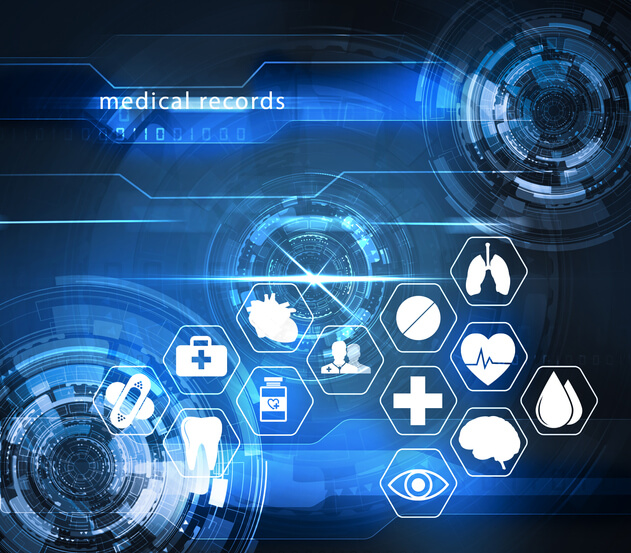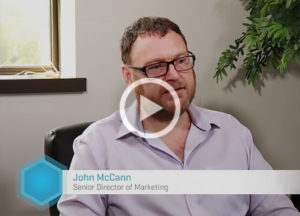By John McCann, Global Senior Director of Marketing at BridgeHead Software
Over the last few decades, hospitals across the developed world have implemented electronic medical record (EMR) applications in response to a mix of regulatory and market forces. Several generations of EMR software systems have already been introduced and, in some cases, upgraded; and in others, replaced. And this trend shows no signs of stopping as technology continues to evolve.
Technological advances in EMR software, combined with stringent data-retention requirements, have resulted in many hospitals replacing existing applications. In doing so, they have and continue to accumulate legacy systems. Not only are these systems now functionally redundant, but they continue to burden the hospital financially (in addition to any new system that may have been procured) as they are expensive to support and maintain. However, traditionally, these legacy systems could not be decommissioned due to concerns about compliance or access to patient records. Mergers and acquisitions in the healthcare sector have further exacerbated this problem, as the acquiring hospital inadvertently inherits (often multiple) duplicate systems, e.g. other Acute EMRs, ambulatory EMRs, etc. adding to the number of legacy systems within hospital networks.
The big-picture goal of EMR adoption has generally been to make complete medical information available to clinicians at the point of care. However, the reality has been more nuanced. In practice, EMRs tend toward a more transactional or record-keeping role. Integration of complete medical records with enterprise-wide interoperability has remained a challenging and elusive goal.
The scope of this challenge is particularly evident when hospitals seek to implement new EMRs or centralize data from outdated or redundant systems. To put it bluntly, if you’re rolling out a shiny new EMR software, you don’t want to risk dumping dirty, old, poorly formatted data into the system. You need a better approach to meeting regulatory requirements while giving clinicians and support staff access to the patient files, images and other data they need.
Let’s take a closer look at the challenges of transitioning patient data and clinical workflows when you implement a new EMR, upgrade an existing system, or retire outdated or redundant applications—and why using an independent repository is the best solution.
The Challenges of Transitioning Data and Workflows to Your New EMR
To retire or decommission any application that contains patient records or other health IT information, that data needs to be securely transferred to another repository. However, several issues make it challenging for hospital leadership to address data migration.First of all, the volume of data generated by healthcare organizations is immense. Hospitals not only need to retain patient records (current and historical), but also a wide range of financial and administrative information. It is usually physically possible to import all the data from old or redundant applications to new or centralized ones. However, this is seldom the best solution and tends to be a highly impractical option. Attempting to migrate all of your data between systems adds costs, delays go-live, and increases the risk of disruptive issues with data compatibility.
You also face the challenge of how to migrate inconsistent and unstructured data. Patient records include everything from high-resolution X-ray images to handwritten physician notes. EMR systems are great for capturing information from a patient’s last physical exam or episode of care, but they simply aren’t designed to serve as a comprehensive repository for healthcare data.
A patient’s complete medical record can span decades and encompass hundreds, if not thousands, of individual touch points with different caregivers and facilities. Not all of this data needs to actually live in your current EMR, but it all needs to be accessible to clinicians at a glance, directly at the point of care.
Because this data typically cannot be effectively integrated into a new EMR due to issues of cost, complexity, and compatibility, it frequently lingers in old systems—not because that is the best solution, but because it requires the least action. Over time, these legacy systems only become more expensive to maintain and more vulnerable to hackers.
To eliminate the problems associated with legacy systems and achieve the long-sought vision of complete, interoperable patient records, hospitals need more than a shiny new EMR with the latest and greatest features. What they really need is a repository behind the EMR to retain incompatible, unstructured, and historical data.
How an Independent Repository Takes the Risk out of the Transition
Because EMRs and other clinical systems generally tend to play a transactional role in the delivery of care, they are not necessarily designed to serve as a comprehensive repository for all patient records across an entire healthcare enterprise. However, there is a clear need for such a solution.
Extracting legacy data for secure storage in a central repository helps to de-risk the replacement and retirement of redundant EMRs and other health IT applications. At the same time, it represents a step toward the “perfect world” where clinicians have complete access to patient information at the point of care, through their primary EMR or departmental system.
Compared to maintaining the status quo or attempting to shoe-horn all of your data into a new or centralized system, using an independent repository offers the best balance of access, security, and efficiency. Below, we’ll discuss two real-world examples of how this works…
Case Studies: Integrating Legacy Data
Harrison Memorial Hospital (HMH) acquired six physician practices as part of a regional growth initiative. With these practices, HMH also acquired six separate eClinicalWorks ambulatory EMR software systems. Faced with the daunting challenge of integrating all the disparate data and aligning workflows across these practices, HMH turned to BridgeHead Software for help.
Using BridgeHead’s HealthStore® solution, HMH was able to extract and consolidate the data from all six inherited EMRs into a central repository that integrates with the hospital’s recently upgraded MEDITECH EMR, in ‘patient context’. With all legacy patient records and data stored securely and accessible through the primary EMR, HMH was able to retire those six redundant systems safely, resulting in significant savings for the enterprise. Best of all, clinicians at HMH now have a 360-degree view of all patient information at the point of care.
For another example of how an integrated repository improves hospital operations, consider Homerton University Hospital NHS Foundation Trust in the UK. After recognizing a number of inefficiencies, Homerton embarked on a digital transformation program for its Outpatients department. It had relied heavily on porters physically going around the hospital and pulling together physical patient records from various departments to supply the clinicians staffing the Outpatient’s clinics. And, when the clinics were finished, those same porters would be responsible for returning all of those records back to their place of origin.
By using HealthStore to consolidate its patient information in one digital repository, Homerton empowered clinicians to access the data they need directly through the hospital’s Cerner EMR. Total expected savings attributable to this improvement exceed £1.7 million.
How Can BridgeHead Help Maximize the Value of Your EMR?
Clinicians depend on having access to complete patient records, at the point of care, to make the best decisions for their patients. BridgeHead helps by providing secure, role-based access to data of all kinds from your legacy systems through HealthStore—an independent, central repository that integrates directly with your current EMR.
With your data secured in HealthStore, legacy systems can be safely retired while you retain full access to patient records, administrative data, and other important information. In addition to making data easily available to clinicians and other users, HealthStore can simultaneously serve as a repository for data that only needs to be retained for compliance or other record-keeping purposes.
Enabling your EMR with HealthStore will deliver immediate benefits by increasing clinicians’ access to complete patient records, but it’s also a step closer to the bigger-picture goal of greater overall interoperability for patient records and other data in healthcare. To learn more about how our EMR software solutions can empower your clinicians and other users, contact BridgeHead today.
Is Your Organization Looking to Enhance its new EMR system?
In this video, the team at Harrison Memorial Hospital details the recent completion of a successful project where they retired six legacy ambulatory systems they had inherited through the acquisition of regional primary physician practices. They also outline how they were able to provide clinicians and support staff with a 360-degree patient view, all available, at the point of care, through their new MEDITECH Web Ambulatory solution.
Webinar Recording: Tackling the nightmare of inherited ambulatory EMRs with an ICA? →
Working in tech marketing for almost 25 years, and specifically in health tech for the last 10 years, John has and continues to learn about the real issues faced by healthcare providers and is convinced that technology, when specified and implemented correctly, can be a ‘game changer’ in the delivery of patient care. At BridgeHead Software, John is working to disrupt the myopia around healthcare applications instead supporting the view that data (and not applications) is the strategic asset by which patient outcomes and experience can be improved. John caught the ‘technology bug’ after starting his career working for a marketing agency specializing in IT. Before joining BridgeHead Software, he held positions at Kerridge Commercial Systems, ADP Inc, Borland and Micro Focus.





